If you want to learn how to make Indian curries that taste just like you get in the restaurant, here’s how. The techniques, the ingredients, the recipes. Indian restaurant curry at home. You can do it.
If you’ve ever wondered why you can’t make Indian restaurant curry at home, here’s why. The entire internet is pretty much devoted to teaching you how to make homestyle curry.
This video should help you get started
Start by watching this video. It’s short. Once you’ve seen it everything below should make more sense. Read the post and come back and watch the video again. It will all make sense. I promise.
Watch how hard the curry is cooking once you add the curry base. That’s what you’re going for. Push it hard after you add it in. It’s almost indestructible at this point. I said almost. Remember that.
You will probably run into a bit of trouble the first couple times you cook restaurant style. Don’t just read this and decide you are having a dinner party.
Practice a bit before you decide to show off. It will come. Just a little different from what most people are used to.
You need to cook like they do in restaurants
The techniques used by restaurants are very different. It takes 1 or 2 hours to make a curry at home. It takes 10 minutes and a whole lot of prep to make it in a restaurant.
They don’t have big pots of curry sitting around. They can’t have you wait two hours while they cook your curry. Here’s how they do it. This is a long read. A pretty complicated read.
But it’s how it’s done and it’s not that hard once you get your head around it. Indian restaurant curry at home. You will amaze yourself.
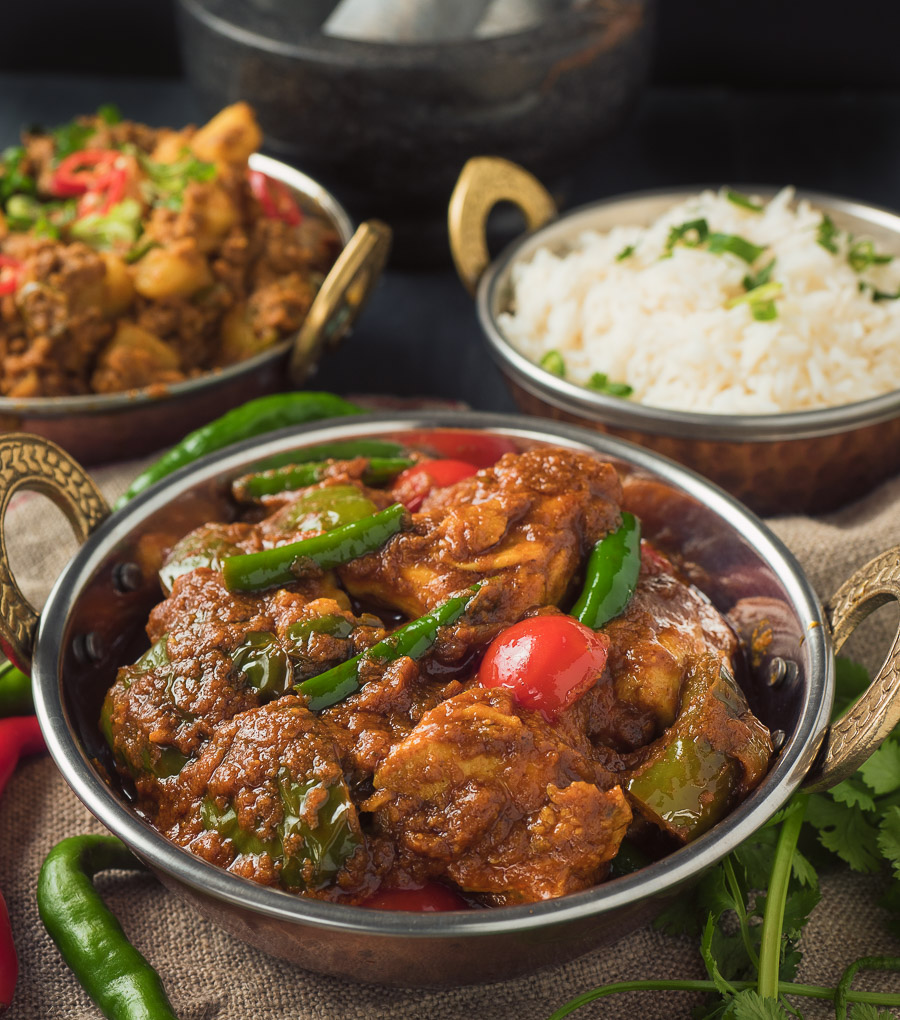
You probably know some of the ingredients already
To make any curry you will probably need to make a trip to a really good grocery store. Or more likely an Indian food store. Some you may already know. Some you may not.
Cinnamon bark (cassia) – you can substitute cinnamon stick. It’s about the same.
Green cardamom – this is the whole spice. You should be able to get it pretty much anywhere.
Coconut milk powder – this is a key ingredient in many South Indian dishes. Maggi is a pretty common brand. It comes in boxes. You can substitute coconut milk.
Tandoori masala – this comes in boxes and jars. It’s tandoori seasoning complete with the red colour. It’s used in some curries. You can also use it to make a quick tandoori marinade. Not a bad one to have around. Get it at Indian grocery stores.
Garlic ginger paste. You can make it or you can buy it. It’s easy to make and homemade tastes way better.

Some you may not be so familiar with
Mix powder – this is the house spice base in the restaurant. It’s a mix of pretty common spices. It’s house-made curry powder. You can use mine or you can come up with your own. All the recipes in this blog are tested with mine.
Kasoor methi – this is dried fenugreek leaves and they use it in pretty much everything. This one I expect will require a trip to an Indian market. It comes in small boxes.
Panch phoran – Bengali 5 spice. You can buy this pre-mixed or make it yourself. It is equal portions of cumin seed, brown mustard seed, nigella seed, fenugreek seed and fennel seed. The spices are whole. It is not meant to be a powder.
Madras curry powder – this is used in a few of the hotter curries.
Kashmiri chili powder – this is a pretty mild chili powder that imparts a bright red colour. Cayenne is much hotter. You can try substituting 1/4 cayenne with 3/4 paprika.
Black cardamom – this is a whole spice. It’s bigger than green cardamom and has a bit of a smoky flavour. Get it at Indian grocery stores.
Curry base – this is the secret to making Indian restaurant curry. You can make a batch of it and freeze it in ziplock backs or small containers. You can’t make this style of curry without curry base.
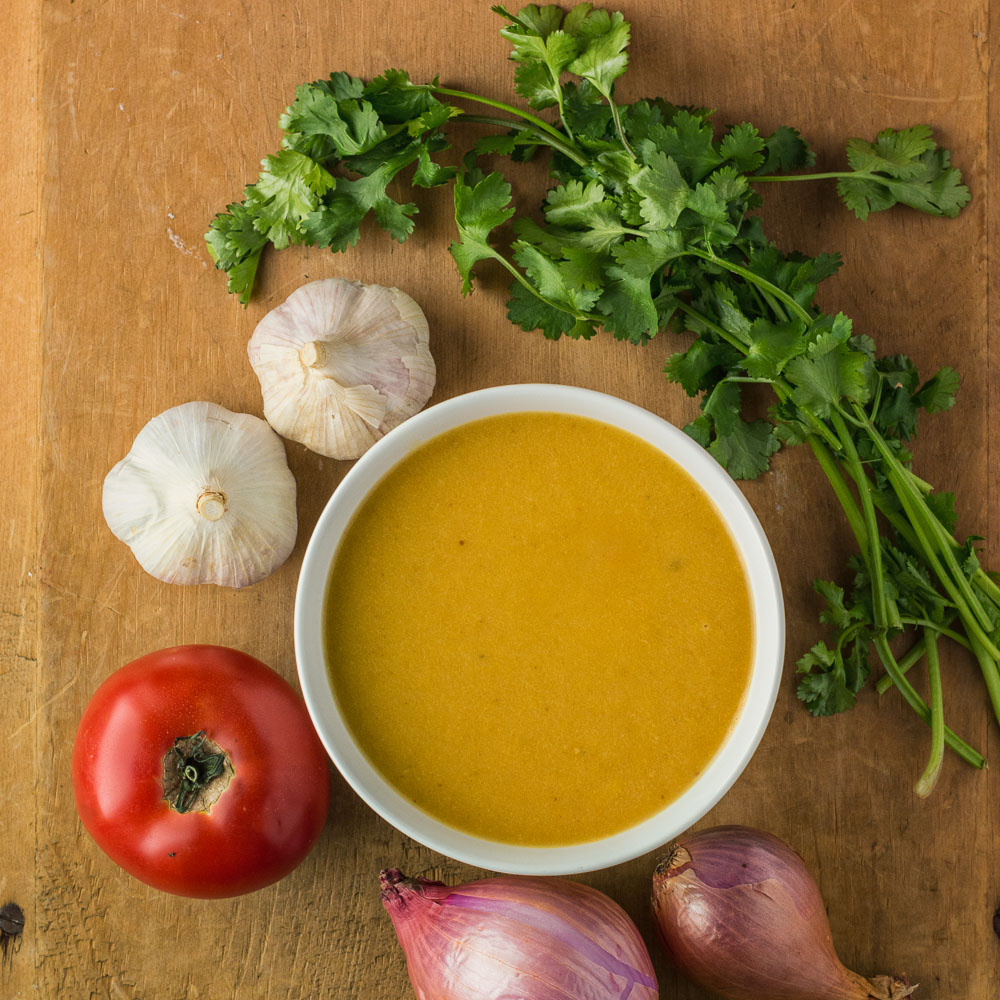
Curry leaves – these are not what curry powder is made from. Think of it as an herb. It’s popular in South Indian cooking and it’s worth seeking out. It’s only good fresh. Dry tastes like nothing. If you can’t get fresh, leave it out. Get it at Indian grocery stores.
Pre-cooked meat – cooking in this style relies on having the meat or poultry pre-cooked. That’s the other secret. Even the vegetables are pre-cooked.
Restaurant style curry means your poultry or meat is pre-cooked
This isn’t a big deal. It’s a time saver really. It also prevents the liquids from the meat diluting your curry. There’s flavour in those juices. That’s true. Everything is a tradeoff…
For chicken, simply cut up the boneless chicken (I like thighs) into big bite size chunks. Put them in a pan with a teaspoon or so of curry powder, add salt to taste then cover in chicken stock.
Simmer until the chicken is just barely done. It will cook another 5 minutes when you cook the curry.
For lamb or beef, cut the meat into big bite size chunks. Brown the meat as you would for stew. Add some curry powder and salt, then cover with stock.
Simmer until tender – about an hour for lamb and two hours for beef. You can freeze the lamb or beef so you don’t have to do this every time. I use a food saver. Works great.
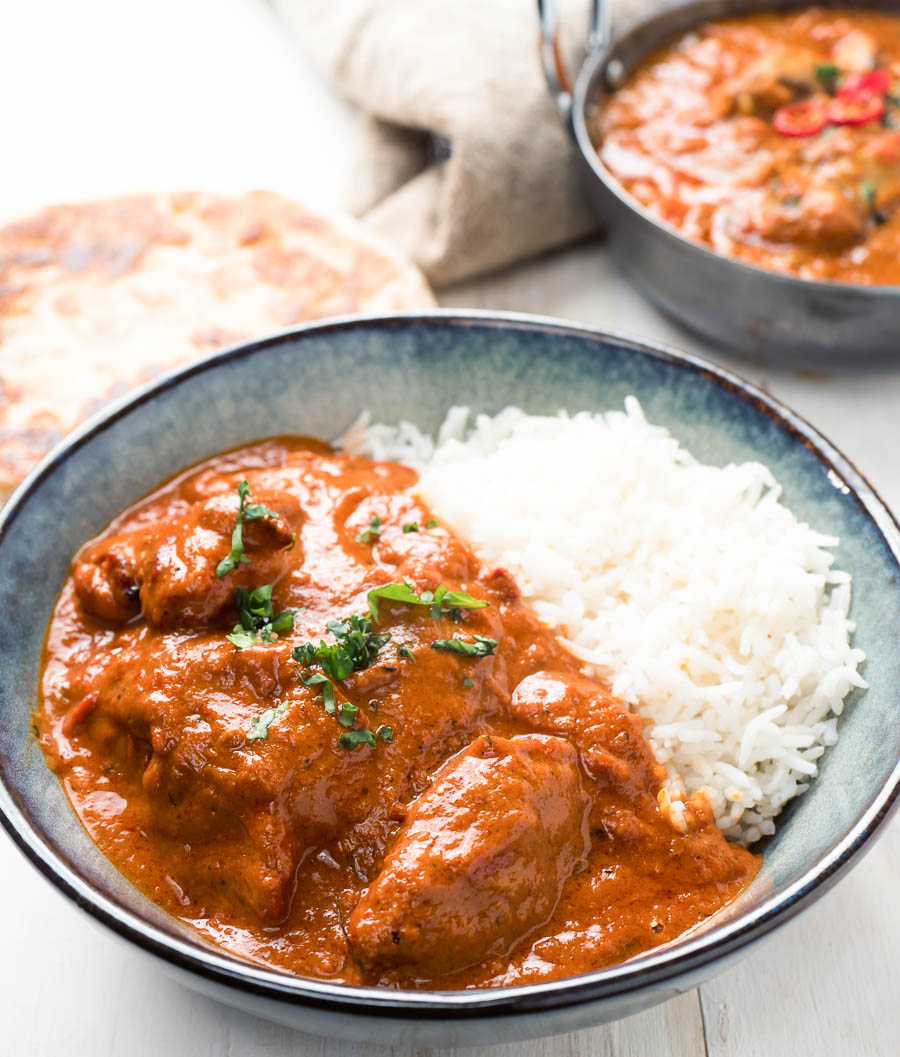
The gear
You don’t need anything particularly fancy. A cheap 10 1/2 inch aluminum skillet is nice have. You can get those at a restaurant supply store for next to nothing.
Aluminum conducts heat almost as well as copper so it works well. Being able to control heat is pretty important when you are making Indian restaurant curry at home.
A roughly 6 ounce ladle is handy as well. The recipes typically call for 6 oz of curry base at a time. If you get into this seriously and start surfing the forums recipes often read “add a ladle of curry base”.
Some small bowls for your prepped ingredients is another nice to have. That’s about it.
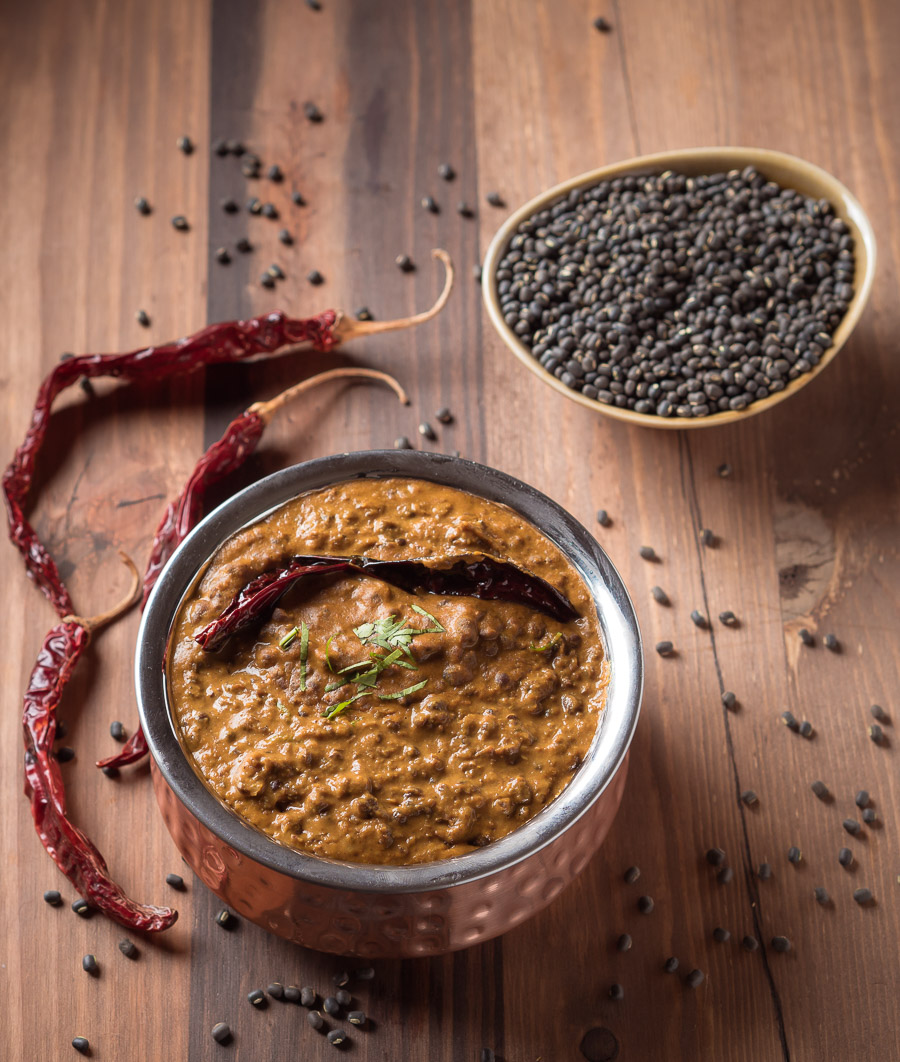
How to cook Indian restaurant style curry
Indian restaurant style curry is all about prep and technique. You may screw up the first couple times. As long as you don’t burn the spices, your screw ups will still be really, really good. Probably as good as your local Indian restaurant.
When you get it though, you will be head and shoulders above all but the best Indian restaurants in town. When you get this you will amaze your friends. You will amaze yourself!
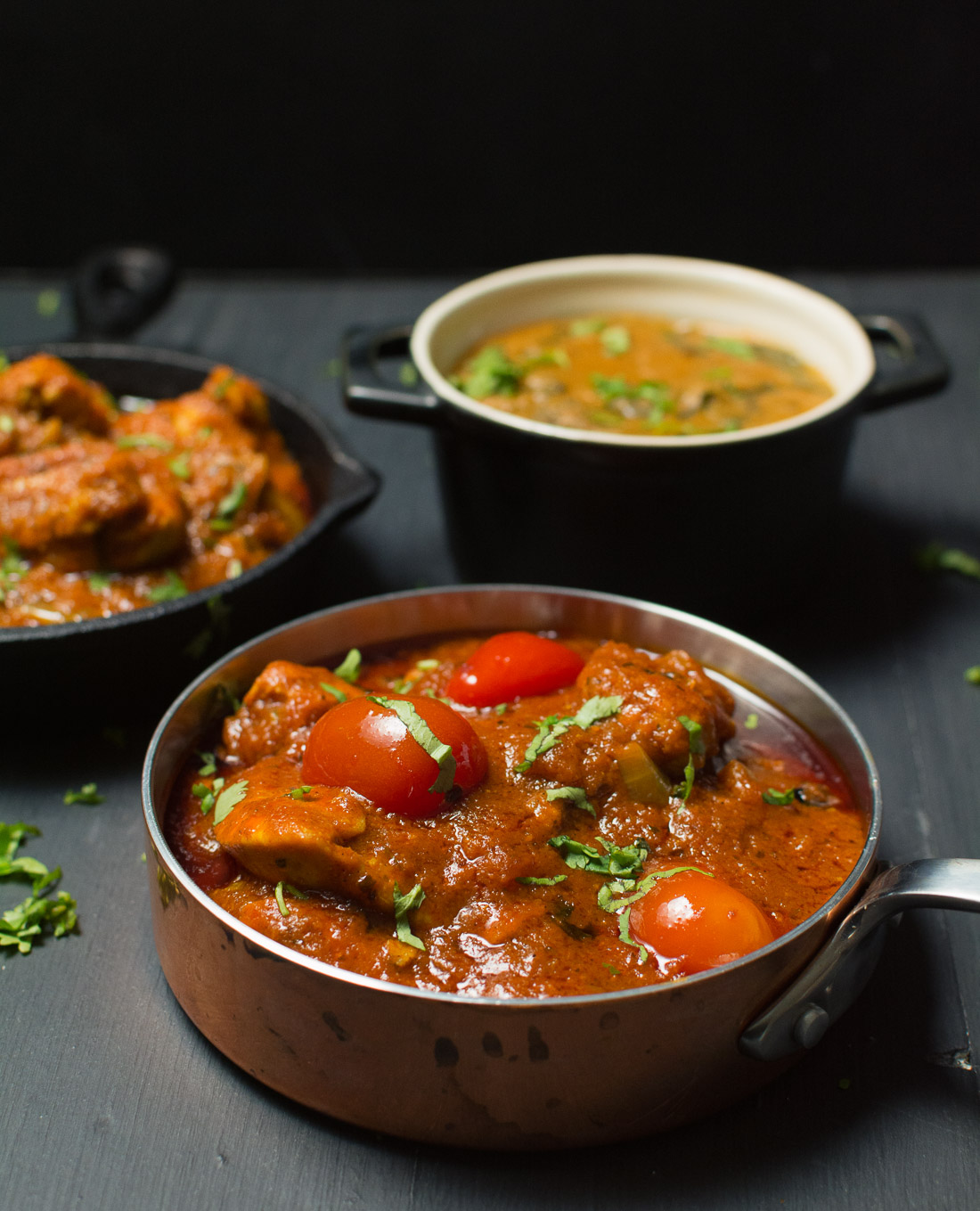
Do your prep
Chop any onions, cilantro, tomato etc that you need. Mix your tomato paste with water. Have your garlic ginger at the ready. Combine the dry powdered spices in a small bowl. In another bowl ready your whole spices (cardamom, cinnamon stick, bay leaf etc).
Prepare your coconut powder by mixing it with water. Read your recipe carefully and understand what you are doing before you start.
Pre-heat your curry base. If you are cooking one curry, you can heat it in the microwave. If you are cooking a feast keep it simmering on the stove.
This technique relies on caramelizing the onions in the base. The base needs to be hot for this to work. I don’t understand why this is important. But it is. I’ve tried with cold base. It doesn’t work.
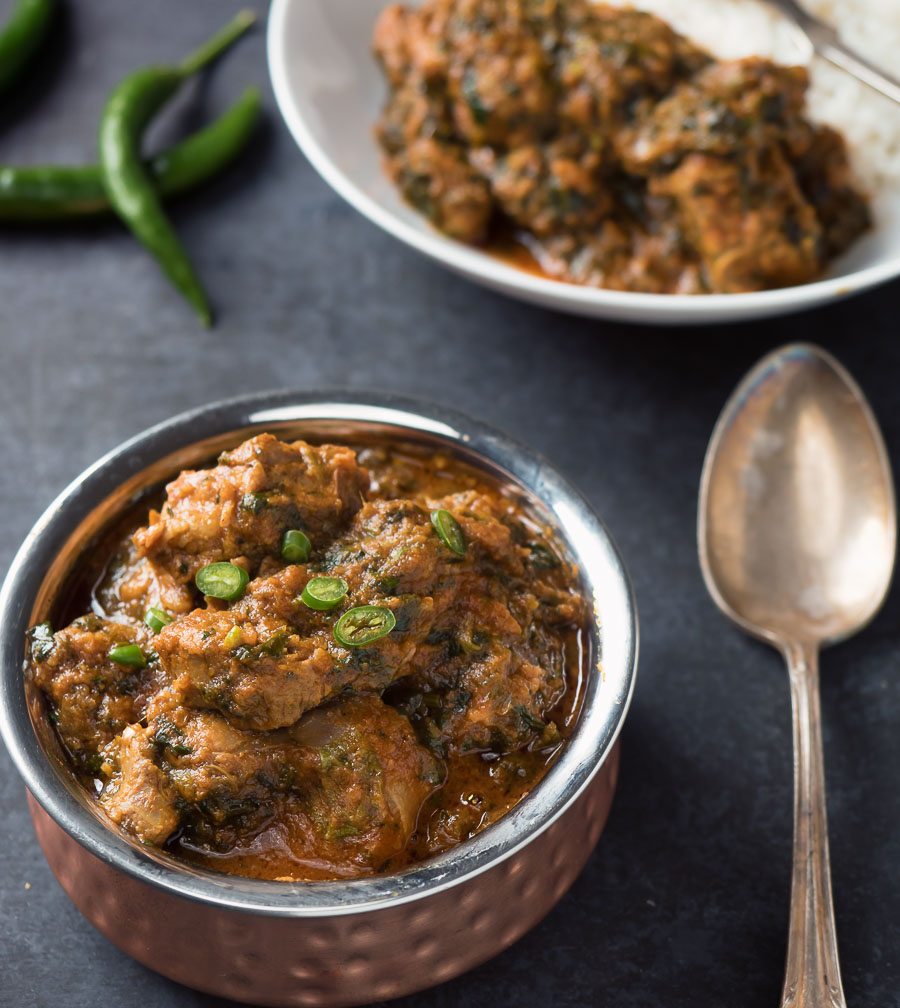
Cook the curry
Read this once to get familiar. It’s worth it to get your groove. The general directions to cook curry are also found in each Indian restaurant curry recipe.
Pre-heat your pan over medium heat. A gas stove helps but it’s not essential. Add the oil to the pre-heated pan. You want to see it shimmer but not smoke like crazy. If it smokes, stop and let it cool a bit.
If the Indian restaurant curry recipe calls for whole spices they go in first. Just for 10 or 15 seconds. That’s all it takes. They will start to crackle a bit. If the recipe called for diced onion it goes in next. Cook the onion until it’s softened and the edges just start to colour.
Add your garlic ginger paste. You want it to bubble and sputter but not burn.
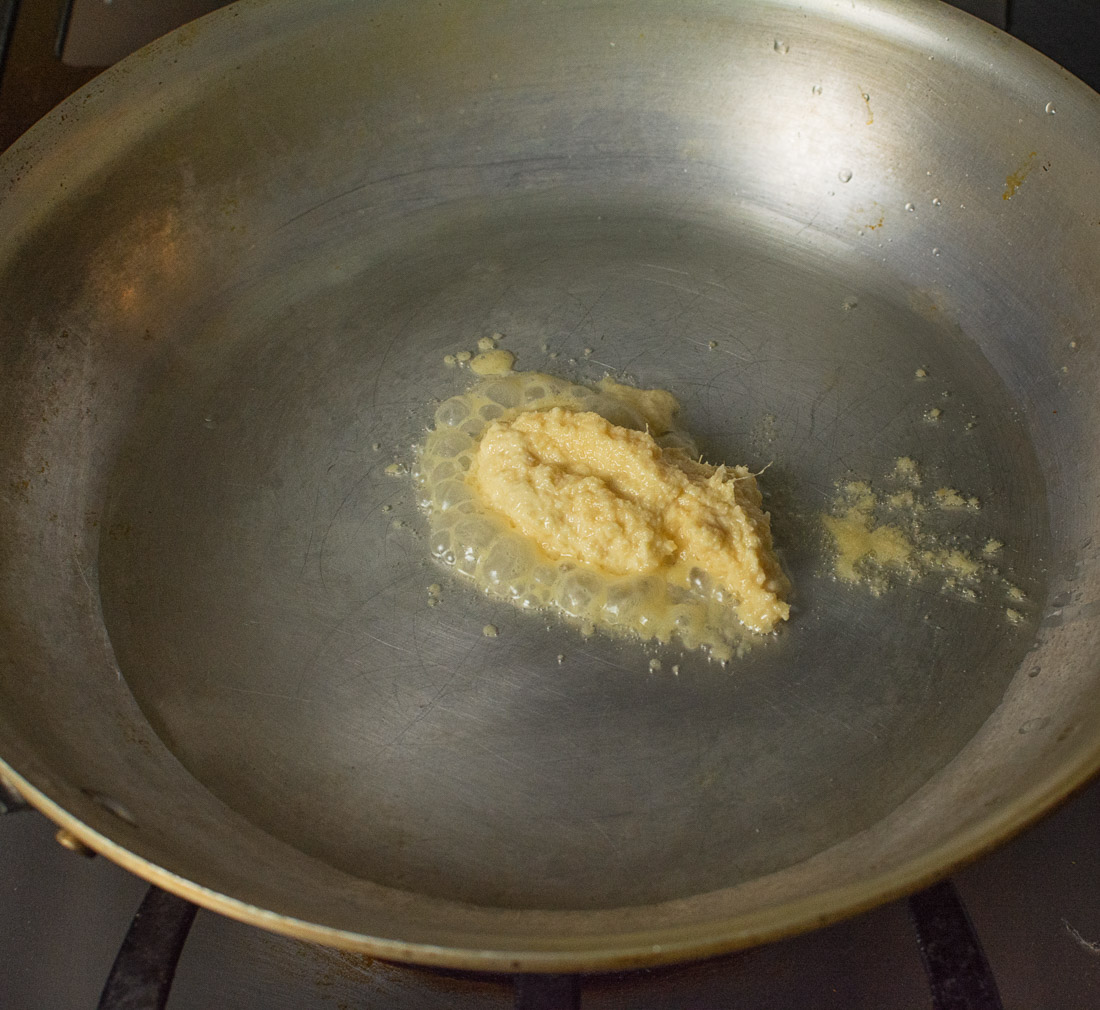
Getting the heat right is critical when you add your spices
When it stops sputtering (30 seconds or so) turn down the heat and add the dry, powdered spices. Some recipes may have you add the kasoor methi first and everything else shortly after.
This is the critical step when cooking Indian restaurant curry at home. Stir constantly. If the spices look like they are at risk of burning turn the heat down. If you have an electric cooktop pick the pan up off the heat. You don’t want to let the spices burn but you do want them to cook through.
Cooking the spices will get rid of the raw spice taste. If the spices burn, just chuck everything and start again. There’s no fixing that. It will happen to you. It did to me at least.
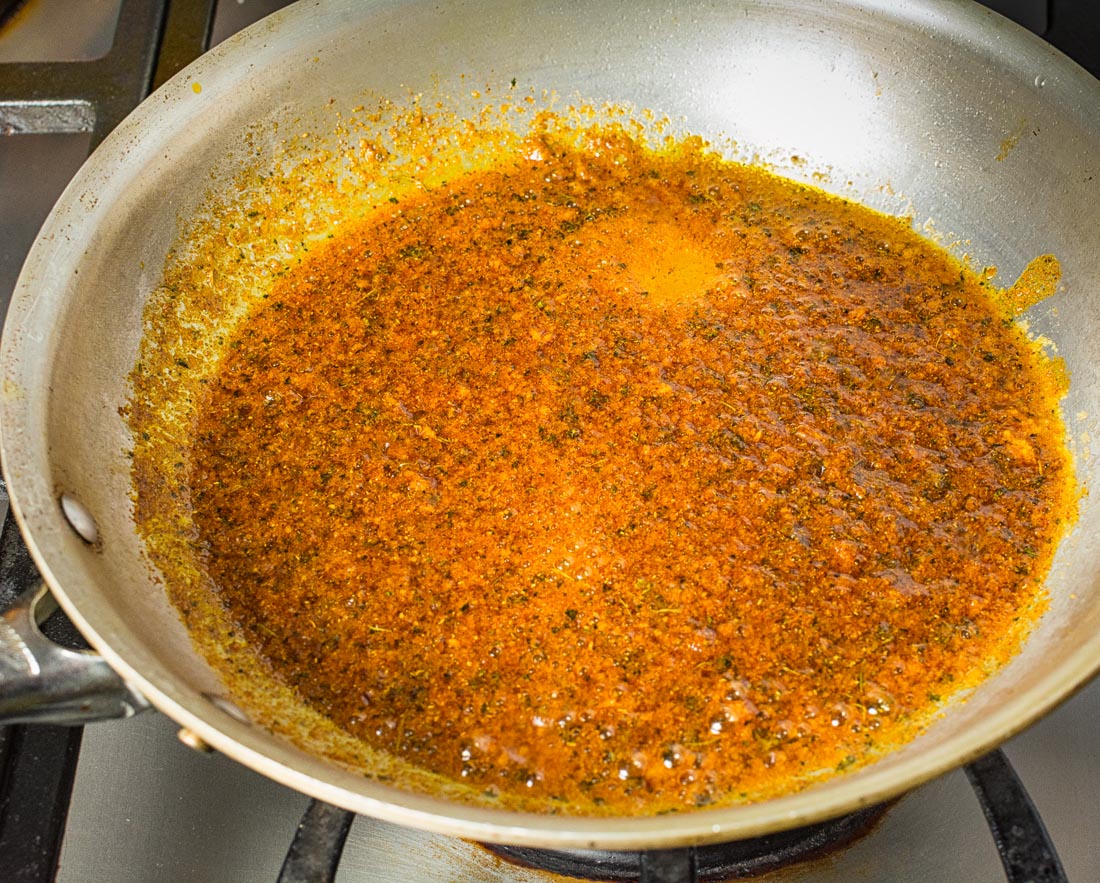
After cooking the spices for about thirty seconds, add the tomato paste water mix and turn up the heat. If the recipe doesn’t call for tomato paste add a splash of curry base.
Stir constantly until bubbles form. The oil may separate at this point. That’s good. You want that. This takes about 30-45 seconds.
The curry base is where the magic happens
Next comes about 3 oz (half a ladle’s worth) of curry base. Add it in and give it a stir. Cook it until the bubbles form again. This takes anywhere between 30-60 seconds.
Now add about 6 oz (a full ladle) of the curry base. Cook it, stirring occasionally, until the bubbles form again. This takes around 90 seconds, depending on your heat.
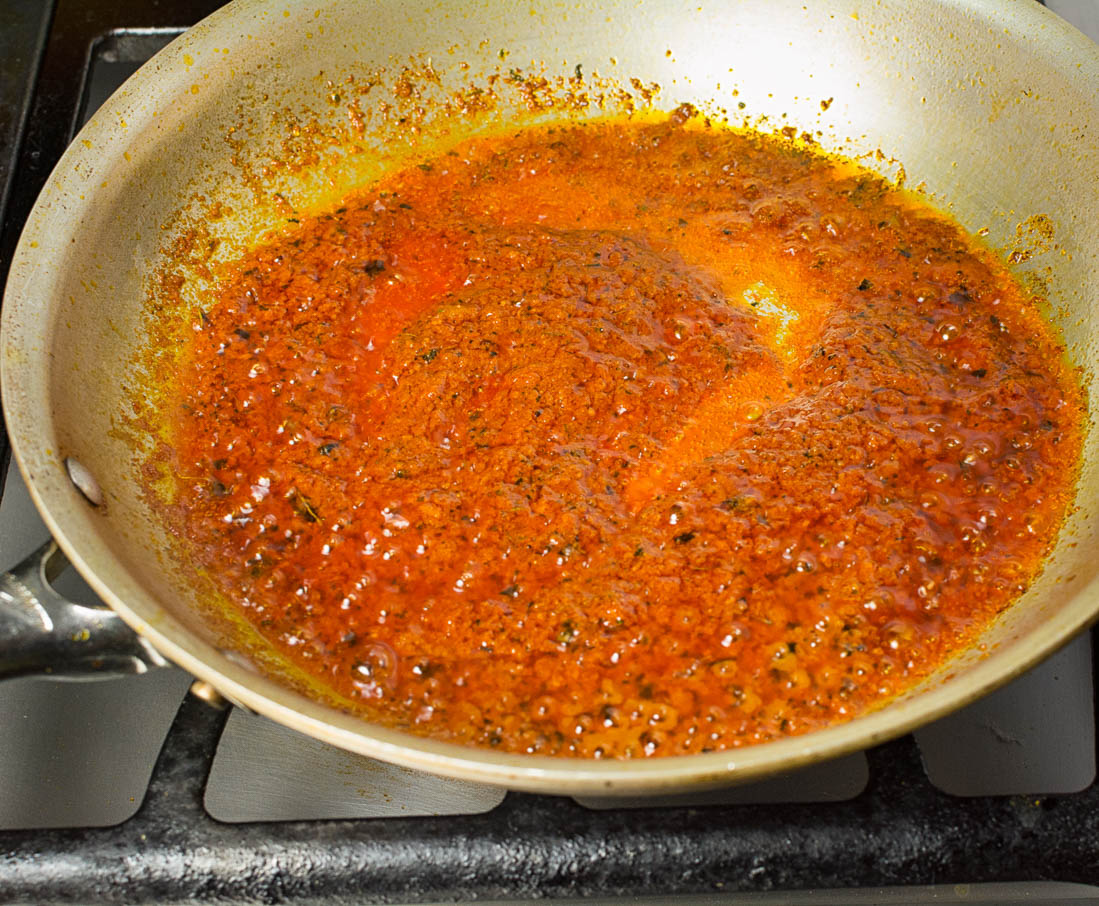
Add a second full ladle and repeat. When the bubbles form, turn the heat down to a simmer.
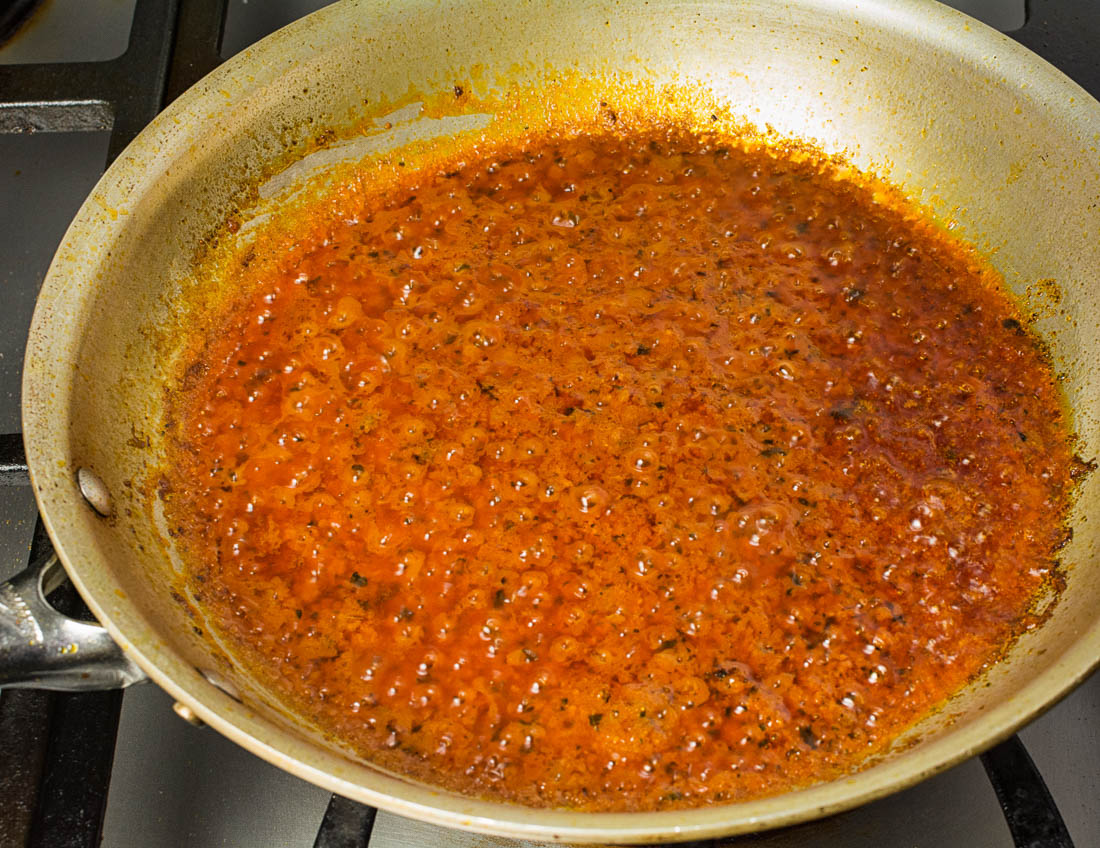
Now comes the pre-cooked meat or vegetable portion Usually, it’s around 8-10 oz of meat per curry. Add it in and stir. Let simmer a few minutes.
At this point add in the finishing touches (lemon juice, coriander leaf, garam masala, coconut milk etc). Give it a final stir, check for salt and serve your Indian restaurant curry with rice, naan or chapatis.
That’s it. It may seem a bit daunting at first but you can do it. You’ll be cranking out really impressive Indian restaurant curry at home in no time!
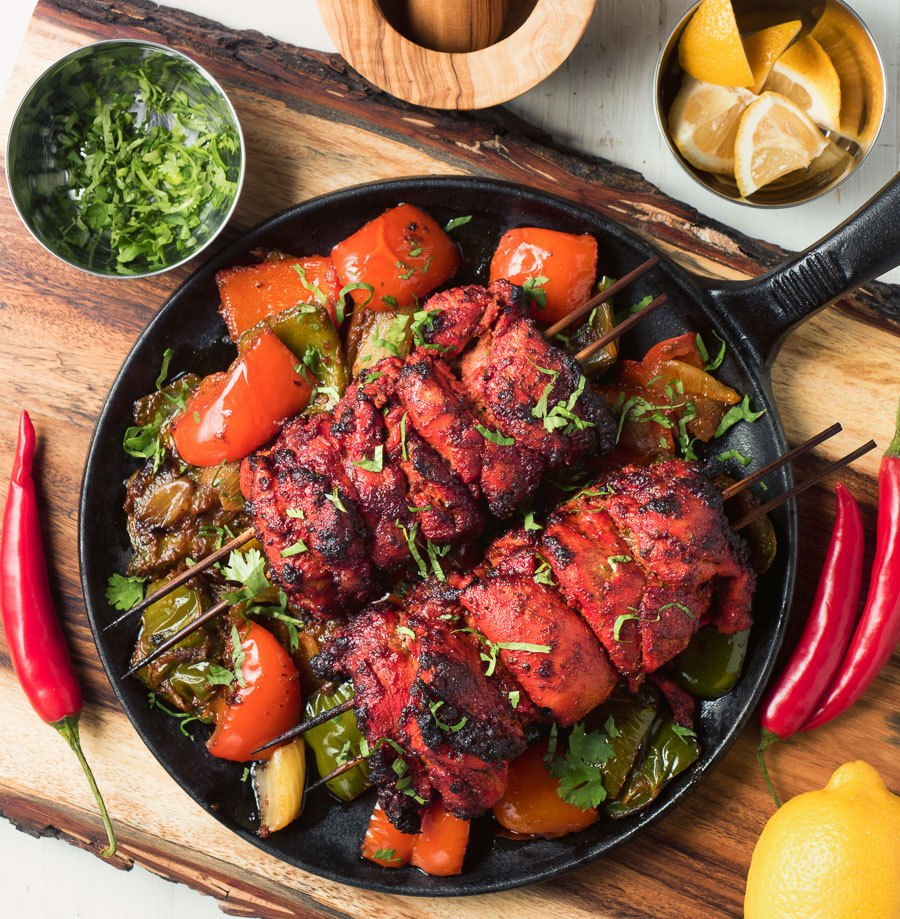
Related recipes
There are many Indian restaurant curries on the this site and more are being added all the time.
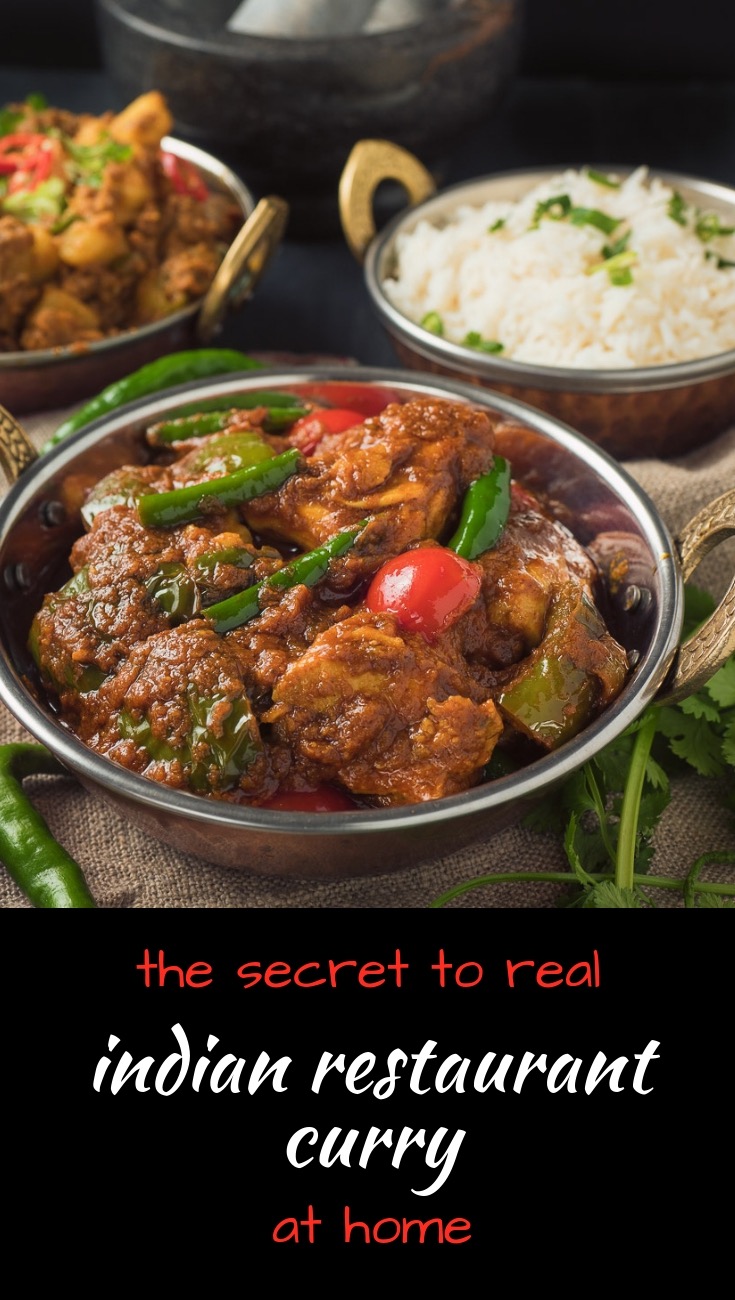

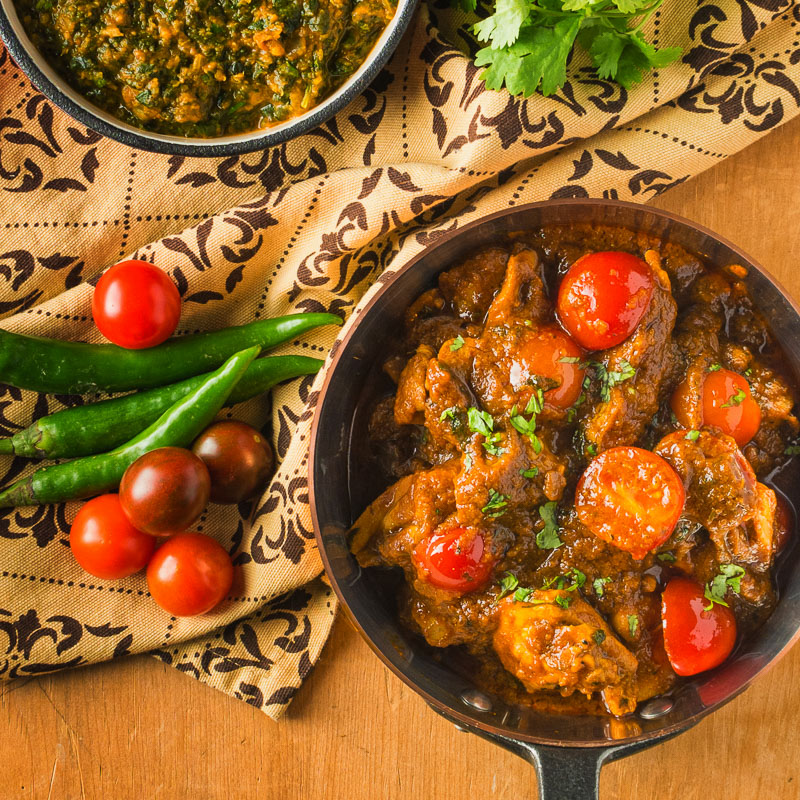
Thanks for sharing this information.
You are very welcome.
Thank you so much for posting all of your methods! You make it look so easy. I’m excited to try doing things this way!
I am curious, if I wanted to make vegetarian curries, how would you precook the veggies first? Similar to how you cook the meat, with a bit of broth and curry powder?
Also in recipes that call for chicken, how much veggies should I do instead? Same by weight? Or maybe just a few cups?
Thanks for all your help! You’re so nice to take the time
You are very welcome! Depends on the vegetable I think. Eggplant fried before hand. Mushrooms probably also fried. Spinach you can just cook and drain. Peas maybe steamed. Paneer would also work as a vegetarian option. Chickpeas too. For the amount it depends what you are looking for. Maybe start with a couple cups and go from there?
Hey Romain
Loving the Indian recipes, all great so far! Do have one question … will you be doing a Biryani recipe?
Biryani I am still trying to figure out. I can make it homestyle but haven’t yet figured out how they do it in really good restaurants. There are some that just basically mix a curry with rice and some base but I’m not so impressed by those. I want a really good biryani that doesn’t require using a dum. For sure when I figure it out I will post it. Bit of a quest for me…
Something I’ve always struggled to get right … fingers crossed for your take on it in the future ?
This is legendary. I’ve been trying to nail it for years. And I’ve just followed what you said and it’s the best curry I’ve ever had I think! And I cooked it! And have impressed friends.
Having followed it I don’t think it’s actually that complicated and even when I took the odd minor shortcut to start with it was epic. Now I’m fine tuning it.
For someone who loves curry as much as me this is actually a Life Changer.
Very nice to hear. Thank you. It was a life changer for me when I figured it out too!
These curries are too complicated for me but they look absolutely delicious.
Do you want a lodger? ?
Haha. Might be a bit of a commute for you. It’s not that hard once you make the curry base. Really. It does seem intimidated at first but once you get it down you can crank out curries really fast.
Absolutely brilliant! I made your base sauce a day in advance, mixed the spices and cooked butter chicken for our sons ( they don’t like hot curry). Then cooked lamb saag for my wife and myself. Both were done in minutes as you said. Both dishes were absolutely amazing! Thank you so so much for taking the time to write all of this! Never have I been able to create such beautiful Indian food. Prep is everything! Brilliant, just brilliant.
Thank you so much for taking the time to say so!
Thank you SO much for the effort you have put into sharing this, your generosity is much appreciated! I have always wondered how restaurants do it. You have made it easy to follow and I am very excited to try a few of these recipes. ? ? ?
Sandy – I can’t wait to hear how your curry adventures go!
Speaking from the perspective of an Indian guy who had a really hard time learning western cooking off web based recipes without the infinite wisdom of a local who could run the basics with his eyes closed, I absolutely loved your post for showing me how equally difficult Indian cooking can be for the non-initiated!
Just one suggestion. Indian curries rely a lot upon the maillard reaction in the base components.
Your curry base recipe will turn out a lot better if you would only let the onions shallow fry for a bit and then add the water rather than boiling them upfront.
I just used your korma recipe with a few minor improvisations.
I first let the whole spices sweat it out in the hot oil for a bit and then let the onions shallow fry for ten odd mins. Added the tomato puree after that and then let it saute till the water dried out and the whole concoction turned brownish…
Doing it this way lets the flavors come out fully!
Agreed on the Maillard reaction for sure. I always do it when I cook Indian homestyle curries. This is restaurant style though so I am trying to stay true to the high speed Indian restaurant technique. I bet your approach to the korma deepens the flavours and for those that aren’t trying to reproduce exactly that’s a great way to go for sure!
So happy I stumbled on your site. You are so thorough and I am excited to try them, all. There’s a joke in NYC that the curry houses on 8th Ave are all connected to one kitchen where all the meals originate!! Funny, eh? Who knows? Thank you so much for all the work that is invested. Happy 2018 tomorrow.
I’m so glad you found me and I hope you enjoy cooking better curries than you can buy! I’m going to start posting restaurant style curries that are a bit off the beaten path so check back soon.
fantastic!!! I’ve been trying to take curry to the next level for years and this is fantastic!
Very glad you found it. It took me years to find out how to do this myself and I’m always happy when other people get the “knowledge”. Lots of restaurant curry recipes on glebekitchen with more coming out all the time.
Enjoyed the descriptions and step by step instructions, nice photos really helped too! Thanks for the explanations on the spices. I like you explanation of home style and restaurant style curry- that was enlightening! Great recipes too.
Thanks Food Guy. Indian restaurant cooking was a bit of a mystery to me for the longest time. Now that I’ve figured it out I’m trying to spread the word!
You are an incredible teacher – this is so clear and engaging, it’s pretty much perfect. I’ve just polished off your house lamb curry recipe and I’ll be going back to that well, often. One technical question if that’s OK – my local Indian supermarket has Kasoori Methi as dried fenugreek leaves, while you specify the seeds – is that an important difference or just a regional variation? (I’m in Western Australia BTW, where they do like to put their own names on things 🙂 )
Hi Doug,
Thanks for the very kind words and for your help editing this post. I don’t know what I was thinking. Kasoor methi is dried fenugreek leaf. I have corrected it above. Sorry about any confusion I may have caused you.
Really enjoyed reading this post , as I’m new to cooking would please tell me how to make the curry base and what are the ingredients
John, there is a link for the curry base recipe in the text above. It is here.
I ABSOLUTELY LOVE this post. It’s so informative and easy to follow and I’m happy to hear that prep is key as well! 🙂 This is very much like Asian cooking where everything has to be at arms length and done quick quick quick! In the past, my knowledge of Indian cooking was indeed just ‘home-style’ curries where you let them simmer for hours, but the flavour was never really there. Thanks for showing me this technique, I am VERY excited to try this out. 😀
I am so glad you like it. It is just like Asian cooking. Be ready to go before you start. I would love to hear how you do. Once you get started with these curries, it’s easy to become addicted.
So, I have green cardamom pods and cinnamon sticks in my pantry, and that is about it! Your list of ingredients is so helpful, I wouldn’t even know where to start! Thanks for the lesson and curries; Indian food is my favorite, and I’d love to try making restaurant style Indian food at home!
One quick trip to an Indian grocery will fix that up. Just make a list before you go and don’t be embarrassed to ask for help. Those groceries tend to be pretty confusing (at least around here).
This is great! I love curry and am always disappointed when I order it out or make it at home. It’s never spicy enough or doesn’t have enough “curry” flavor for me. I can’t wait to give it a shot and try your method for Indian restaurant curry at home. Thank you so much!
This post is so helpful! I love your glossary of indian spices–there were definitely a couple in there that I’m not familiar with. Every time I’ve made curry at home, it’s not quite the same and I love your distinction between restaurant-style curry and homemade curry. Looking forward to having a bowl of chicken curry and naan!!
This post is so great!! I love love indian restaurant curry and I’m so excited for all you’ve done to help me re-create it at home! I’ll definitely be trying this soon!
I’m glad you like it. You can spread it out over a few days. Make a batch of curry base one day. Make some garlic ginger paste the next. Tackle a couple curries the day after that. Once you get it you won’t believe how good it can be. Curry base freezes well and garlic ginger paste keeps for quite a while in the fridge.
I never knew about this, I just figured restaurants had big batches of curry that they reheated. No wonder I can’t ever get the same texture!!! It looks like it would take me a while to get the hang of this new approach, but I’d much rather put in the prep work when I have the time, and keep the assembly time short. And that final product looks beyond amazing!!!
It’s one of those things that rewards the efforts. I don’t much care for most Indian restaurants anymore. The real work is in making the curry base but you can portion it out and freeze it. One batch of base makes enough for 10-12 curries so quite a few dinners.
Prep really is key! I learned a lot about curry ingredients in this post and I like the way you wrote out this post. Very informative! 🙂 Your top photo is wonderful. Looks so delish!
Thanks for that Marie. Prep is big in any restaurant kitchen but you can usually find a way to approximate things in the home kitchen. I haven’t seen anything that makes me think that would work for Indian restaurant curry though.
Thank you So much I have learned a lot
You are very welcome!
Thanx for ur valuable tips n tricks to make the curry like restaurant style..?
You are very welcome!